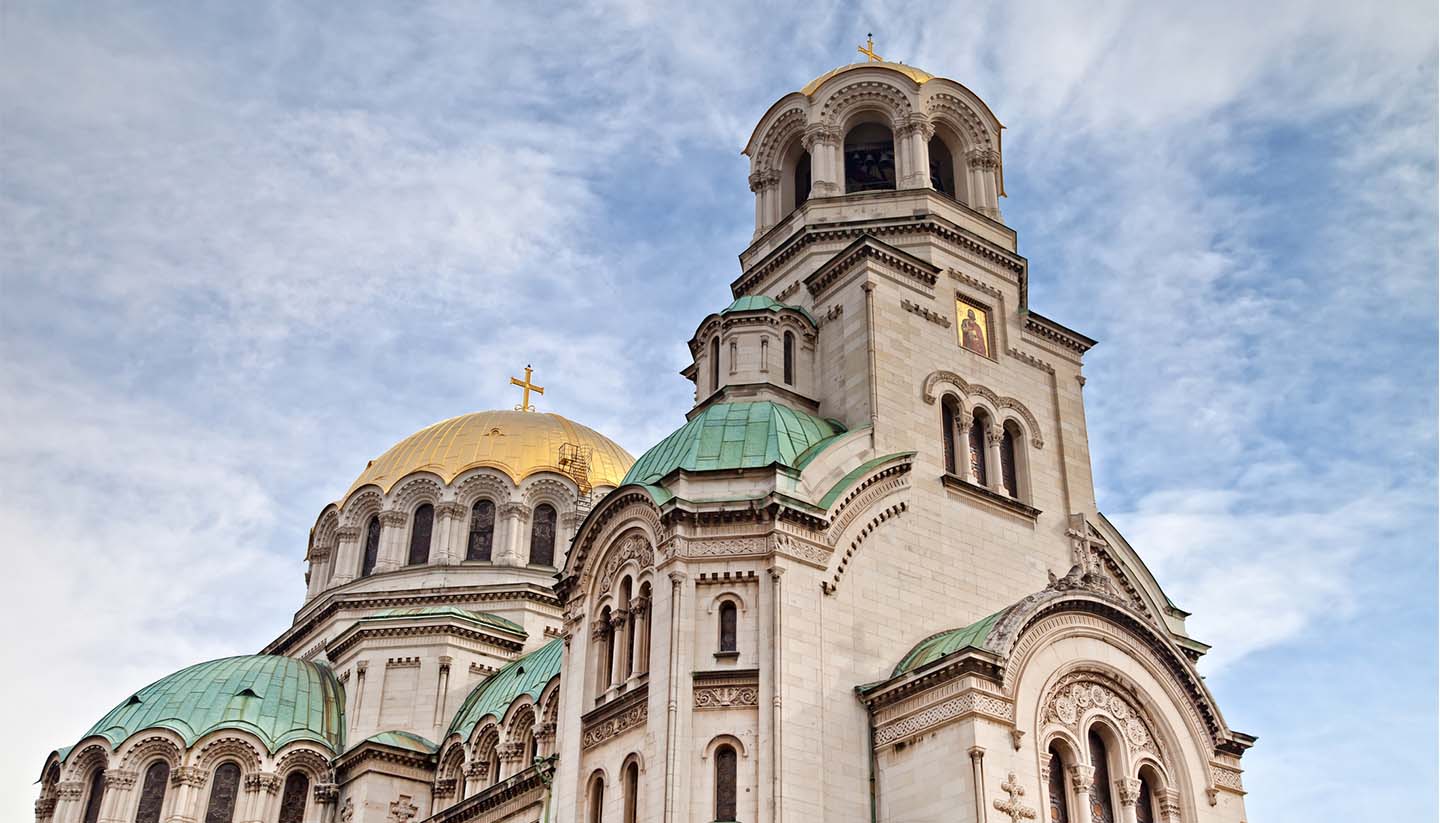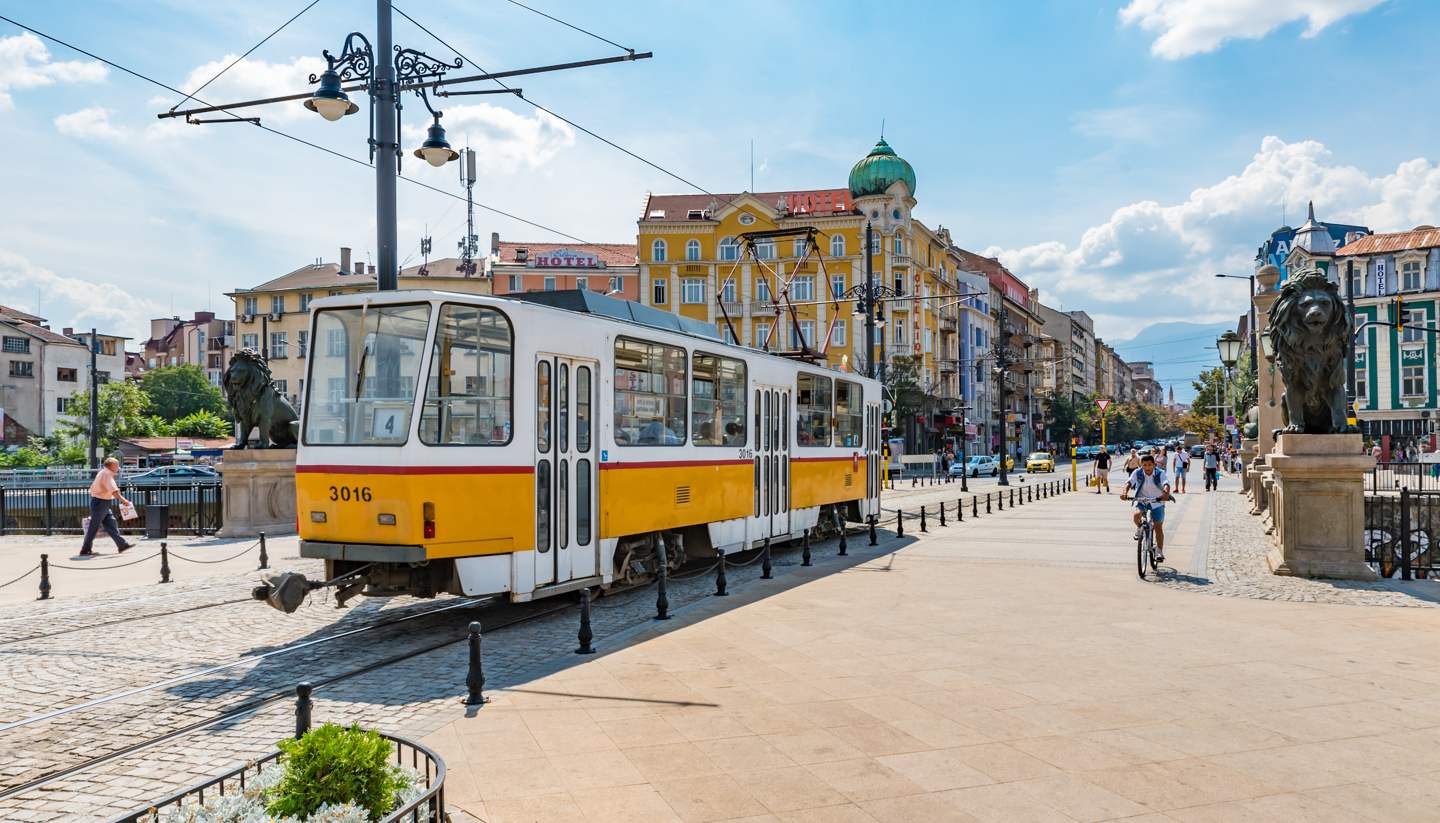Things to see in Sofia
Attractions
Boyana Church
Lying 8km (5 miles) southwest of Sofia, this is one of Bulgaria's most cherished treasures and an absolute must-visit. The tiny medieval church was closed to the public for 38 years while it underwent restoration work, finally reopening in 2000. It is best known for its exquisite 13th-century frescoes, depicting scenes from the Bible and the lives of the saints. These are renowned for their realism and considered among the best examples of the Bulgaria's medieval art. Boyana is one of ten Bulgarian cultural monuments included on the UNESCO list of World Heritage sites (seven of which are cultural sites, three natural). In fact, it’s so hallowed that admission is restricted to 10 minutes in the company of a guide. Accessed by minibus 21 from Boulevard Patriarh Evtimly.
Address: Boyana, Ulitsa Boyansko Ezero, Sofia,Telephone: +359 2 959 0939.
Opening times:
Daily 0930-1730 (Apr-Oct); daily 0900-1700 (Nov-Mar).
Website: http://www.boyanachurch.orgAdmission Fees:
Yes
Disabled Access: YesUNESCO: Yes
Hram-pametnik Aleksandar Nevski (St Alexandar Nevski Memorial Church)
Probably Sofia's most photographed monument, Alexandar Nevski is a magnificent neo-Byzantine cathedral-sized church, topped by copper and golden domes and one of the largest Eastern Orthodox churches in the world. Built between 1882 and 1912, the church takes its name from Alexandar Nevski, credited with saving Russia from Swedish troops in 1240, and the patron saint of the family of the tsar at that time, Alexander II (also known as Tsar Osvoboditel, the ‘Tsar Liberator') who led the army that drove out the Turks. The inside is even more impressive; a darkened interior with vast domes covered with delicate murals. The central altar is dedicated to St Alexandar Nevski, the southern altar to St Boris (who brought Christianity to Bulgaria) and the northern altar to Saints Cyril and Methodius (who created the Cyrillic alphabet). The Icon Museum, located in the crypt, has over 300 icons and mural frescoes tracing the development of Bulgarian icon-painting from the late ninth century up to the end of the 19th century.
Address: , Ploshtad Aleksandar Nevski, Sofia,Telephone: +359 2 988 1704
Opening times:
Daily 0700-1800.
Website:Admission Fees:
No
Disabled Access: YesUNESCO: No
The Museum Of Socialist Art
Opened in 2011, this new addition to Sofia’s cultural scene boasts a fascinating collection of Socialist sculpture, paintings and other art. The main spectacle is the outdoor sculpture park, where visitors are greeted by the vast statue of Lenin that once stood in the centre of the city. The red star taken from the top of the Socialist Party headquarters is also here as well as over 70 other relics that are inexorably linked to Bulgaria’s past. Uplifting and melancholy in turn, the most frustrating part of the museum is that it lacks a sign. Look for the statues in the garden instead.
Address: , Ulitsa Lachezar Stanchev 7, Sofia,Telephone: +359 2 980 0093.
Opening times:
Tues-Sun 1030–1730.
Website:Admission Fees:
Yes
Disabled Access: NoUNESCO: No
National Art Gallery
Located inside the former Tsar's palace, Sofia's National Art Gallery houses Bulgaria's largest art collection, with some 60,000 works. Its creaky wooden floors, original marble fireplaces and high ceilings ensure the building is a sanctuary from the Sofia heat, which can feel quite sticky in the summer.
When Sofia was conquered by the Turks in 1382, this building became akonak (headquarters) of the local Ottoman administrators. At one time these were used to interrogate Bulgarian rebels. These days it charts the development of Bulgarian art from 1878 to the mid-20th century, beginning with the Revivalist period and portraiture with painters like Zograf, Dospevski and Pavlovic. Moving into the early 20th century, examples of the popular 1930s movement includes scenes by Nikola Tanev, a Gaugin-esque Stoyan Sotinov and wonderful paintings of old Plovdiv by Tzanko Lavrenov. There are also regularly changing exhibitions from international artists.
Address: , 1 Knyaz Alexander I Boulevard, Sofia, 1000Telephone: +359 2980 0093
Opening times:
Tues–Sun 1000-1800.
Website: http://www.nationalartgallerybg.orgAdmission Fees:
Yes
Disabled Access: YesUNESCO: No
The Natural History Museum
If small, wriggly things are not your bag, you probably won’t enjoy the National History Museum. After being greeted by two long-dead ostriches, the rest of the first floor is a combination of winged beasts, creepy crawlies and snakes. The line between stuffed animals and animal statues then becomes increasingly blurred, until a quite ridiculous scene between a tiger and a bear with two cubs having a stand-off in front of a row of Christmas trees. Similar scenes then continue throughout – don’t miss the python sinking its teeth into a baby deer’s neck.
Address: , 1 Tsar Osvobodoitel Boulevard, ,Telephone: +359 2 987 4195
Opening times:
Daily 1000-1800.
Website: http://www.nmnhs.comAdmission Fees:
Yes
Disabled Access: YesUNESCO: No
Ethnographic Museum
After entering Hall 1 of the Ethnographic Museum you’ll be greeted with step-by-step instructions on how to make kirpich (bricks). It's around this point you’ll probably consider the entrance fee money badly spent, but don’t give up. Ethnography is the study of different cultures and how they behave and evolve, and in this sense the museum mirrors its aims completely. After starting with the building blocks of Bulgarian rural life, things progress into an exhibition about the town of Yugavo in the Rhodope Mountains. It includes some beautiful black and white pictures from the village including men in fezzes and straight-backed woman, all with darkened skin from a lifetime in the fields. In the next rooms you will see a different kind of building block: looms and knitting needles the size of pneumatic drills. There are also children’s toys and dolls that would not out of place in a horror film today. Certainly one of the city’s less trumpeted attractions, it’s without doubt one of its most charming.
Address: , 1 Ploshtad Knyaz Aleksandar I, Sofia, 1000Telephone: +359 2 805 2621
Opening times:
Tues-Sun 1000–1800.
Website:Admission Fees:
Yes
Disabled Access: YesUNESCO: No
Kodi Seyfullah Efendi Camii (Banya Bashi Mosque)
During the years of Ottoman occupation there were 70 mosques in Sofia, but today there is only one still functioning. Banya Bashi Mosque was built in 1576 by Mimar Sinan, who also built the Sultan Selim Mosque in Edirne and Istanbul's famous Blue Mosque. The mosque’s finest feature is its domed ceiling, restored to its original design after the fall of Communism. Loudspeakers call the city's Muslim minority to prayer five times a day: on Friday there can be as many as 400 worshippers in attendance. The mosque is not officially open as a tourist attraction but visitors are welcome outside prayer times, including women, just be sure to dress respectfully.
The inside is decorated with fine blue tiles and calligraphy, citing texts from the Koran, as the portrayal of human figures is banned in Islamic art. Known as Banya Bashi, meaning ‘many baths', outside the mosque there are the small remains of the original hammam (Turkish baths), unearthed in 2003-2004.
Address: , 2 Knyaginya, Maria Luiza Boulevard, Sofia, 1164Telephone: +359 2 981 6001
Opening times:
Daily 0500-2000 (excluding prayer time).
Website:Admission Fees:
No
Disabled Access: YesUNESCO: No
Tsentralna Sofiiska Sinagoga (Central Sofia Synagogue)
Situated behind the Hali, the Central Sofia Synagogue is the second largest Sephardic synagogue in Europe. Designed by the Austrian architect Friedrich
Grunanger, the synagogue was built to resemble an earlier synagogue in Vienna, which was destroyed by the Nazis. The century-old building is a square block of Spanish-Moorish design, with a large central dome lit by a showpiece 2,250kg (4,960lb) chandelier. The outer walls are ornamented with floral and geometric motifs. The synagogue was originally intended to accommodate 1,300 worshippers, but nowadays services are only attended by 50 or 60 people, and services on regular Sabbaths are usually held in a small room off the main gallery. Visitors must ring the bell on the gates for entry.
Address: , 18 Exarch Joseph Street, Sofia, 1000Telephone: +359 2 983 1273.
Opening times:
Mon-Fri 0900-1630; closed Bulgarian and Jewish Sabbath and holidays.
Website: http://www.sofiasynagogue.comAdmission Fees:
Yes
Disabled Access: YesUNESCO: No
The Church Of St Nicholas The Miracle-Maker
If you need an antidote to garish, golden Orthodox churches, visit the three room crypt underneath the Church of St Nicholas (also known as the Russian Church). The walls are decorated with typically Orthodox imagery throughout and unsurprisingly St Nicholas is depicted as the star of the show. Visitors can write out prayers and drop them into the box at the end of the third room. Believers kneel and kiss the grey coffin of Bishop Seraphim, revered by many in the country, while offering marks of the cross for St Nicholas or loved ones. A genuinely powerful setting, the only thing you’ll be asked to pay for is a candle, should you wish to buy one.
Address: , Tsar Kalovan 8, Sofia, 1000Telephone:
Opening times:
Mon-Sun 0730-1800.
Website:Admission Fees:
No
Disabled Access: NoUNESCO: No
Rotonda Sveti Georgi (Rotunda of St George)
Standing in the courtyard of the Sheraton Balkan Hotel, the tiny sunken redbrick Rotunda of St George is the oldest preserved building in Sofia, built in the fourth century as a Roman temple. Careful restoration work has revealed three layers of exquisite medieval frescoes, which had been hidden by plaster during the 500 years of Ottoman rule. The impressive cupola bears a 14th-century portrait of Christ the Pantocrator, surrounded by four angels and symbols of the Evangelists. Beneath, 12th-century fresco work depicts 22 prophets holding scrolls, with texts alternately in Bulgarian and Greek. To the east lie excavated foundations of an octagonal-shaped Roman public building and paved street.
Address: , 2 Kniaz Alexander Dondukov Boulevard, Sofia,Telephone: +359 88 891 3396.
Opening times:
Daily 0800-1700 (winter); daily 0800-1800 (summer).
Website: http://www.svgeorgi-rotonda.comAdmission Fees:
No
Disabled Access: YesUNESCO: No
Tourist Offices
Bulgarian Municipality Agency for Tourism
Address: , 44 Oborishte Street, Sofia, 1505Telephone: +359 2491 8344.
Opening times:
Mon–Fri 0930–1800.
Website: http://www.visitsofia.bgThe tourism office in Sofia is located in the underpass of the Sofia University St. Kliment Ohridski Metro station. Staff are incredibly helpful, speak English and can offer advice and assistance for all visitors to the city.



